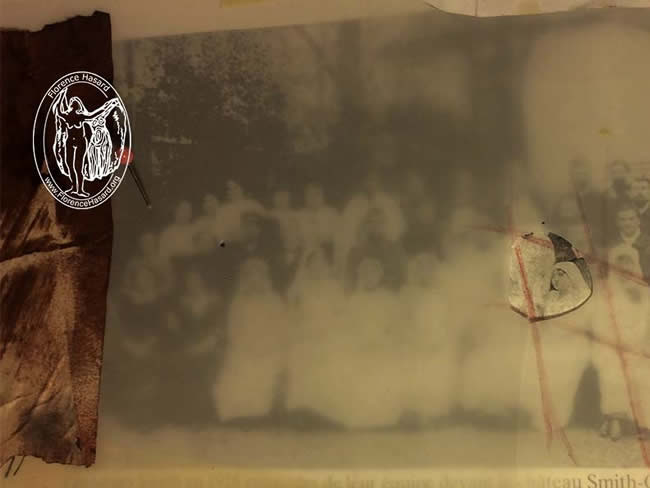
Florence Hasard Chronology
Sophie La Rosière & Florence Hasard: Project-Chronology
RED: fiction
BLACK: fact
1867: Sophie Basset (later known as “Sophie La Rosière”) is born in Nogent-sur-Marne, France.
1881: Charlotte Partridge is born in Minneapolis, Minnesota, United States.
1882: Florence Hasard is born in Nogent-sur-Marne, France.
1892: Miriam Frink is born; place of birth is unknown.
1898: Florence leaves Nogent-sur-Marne for Paris to begin life on her own.
1904: Sophie’s parents pass away. Sophie inherits the family home and soon after applies to the Académie La Grande Chaumière in Paris.
1905: Charlotte Partridge travels to Europe by ship and visits Paris, where it is possible she meets Florence for the first time at Académie La Grande Chaumière as she researches European Art Schools.
1906: While modeling for drawing classes at Académie La Grande Chaumière, Florence meets Sophie la Rosière.
1907: Florence and Sophie become friends and lovers. It is presumed both women form their personal art practice at this time.
1908: Florence moves from Paris to Nogent-sur-Marne to live with Sophie. They maintain a relationship until shortly after the end of WWI.
1914: Germany declares war on France at the start of WWI.
1914: Florence becomes a nurse at the auxiliary military hospital #73 in Nogent-sur-Marne, caring for soldiers from the front for the duration of the war.
1914: Charlotte Partridge moves to Milwaukee, Wisconsin, United States.
1918: France, Germany, and Great Britain sign the armistice, ending WWI.
1918: Frictions in the relationship between Sophie and Florence lead to Florence moving back to Paris.
1920: Charlotte Partridge and Miriam Frink open and administer the Layton School of Art in Milwaukee.
1922: Charlotte Partridge is promoted to curator of the Layton Art Gallery; she proceeds to modernize the collection.
1925: The registry office in the Alsace region of France lists Florence as a resident.
1927: Florence applies to immigrate to the United States of America.
1928: There is evidence of Florence in Milwaukee.
1935: The Milwaukee Handicraft Project, a program of the Work Projects Administration (WPA), begins and employs women, minorities, and immigrants to make handmade products.
1937: Several accounts place Florence working for the Milwaukee Handicraft Project.
1939: France declares war on Germany at the start of WWII.
1942: Milwaukee Handicraft Project officially ends as a WPA project. Over the seven-year history of the WPA-run project, five thousand individuals were employed.
1942: No trace is found of Florence after this year.
1944: The military structure of the French Resistance stages an uprising against the German garrison upon the approach of the US Third Army, resulting in the Liberation of Paris.
1945: Hostilities end in the European theatre of World War II with Germany’s surrender to the Allies.
1947: Sophie La Rosière moves into Maison Nationale des Artistes, a retirement home for artists in Nogent-sur-Marne, France.
1948: Sophie La Rosière dies in France.
1975: Charlotte Partridge dies in Wisconsin.
1977: Miriam Frink dies in Wisconsin.
2013: The oeuvre of Sophie La Rosière is discovered. In the following years, her work is investigated, her life reconstructed, and her art is exhibited in Paris and Toronto. However, the whereabouts of her decade-long lover, Florence Hasard, lingered unsolved.
2017: Unsigned sketches dated 1931 found in the Layton School of Art archives. They are now attributed to Florence.
2017: Curator and writer Philip Monk assesses Sophie La Rosière’s oeuvre to publish her catalogue raisonné. In his essay “Intrapsychic Secrets,” he identifies some paintings originally attributed to Sophie as created by Florence. Monk’s view onto Florence’s work for the first time sparks an investigation into her whereabouts and leads to the discovery of her works in Wisconsin.
